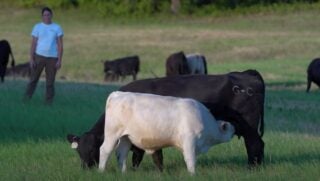Many farmers who have used Dicamba technology over the past two years were wondering if they would be able to utilize it in the future. It was announced last night that the Environmental Protection Agency continued registration, including label changes, for XtendiMax Herbicide with VaporGrip Technology, following an extensive review. Building on the success of the 2017 and 2018 seasons, this continued registration ensures that growers will have access to this vital weed-control tool for the 2019 season and beyond.
“Growers have indicated the need for this important tool, as a component of a complete weed management system, to fight tough-to-control weeds. XtendiMax is a highly effective, proven broadleaf weed control option that is delivering results for farmers, who have reported 95 percent weed control satisfaction* over the last two seasons,” says Ryan Rubischko, Bayer’s dicamba portfolio lead. “This continued registration, based on an extensive review, keeps this much-needed weed control tool in the hands of growers.”
Among the highlights of the EPA issued label for XtendiMax, which remains a Restricted Use Pesticide (RUP), this product is only approved for sale to and use by certified applicators. Annual mandatory applicator training and record keeping remain important requirements. Additional changes are included as outlined on the label. Bayer is planning a robust training program to educate certified applicators on the label requirements. Information regarding training opportunities prior to the 2019 season will be available soon here.
With approval of the EPA federal label, 34 soybean and cotton producing states will now work through their approval processes. Growers and applicators should check with their State Department of Agriculture for approval updates.
“For the 2019 season, we’ll continue to work closely with growers and applicators, along with grower associations, state regulators, universities and others to ensure growers have continued success with XtendiMax with VaporGrip Technology,” says Rubischko.
Secretary Sonny Perdue said, “It is important that the EPA has decided to renew the registration of over-the-top use of this important weed control technology on dicamba-resistant cotton and soybeans, because it presents farmers with options. This represents the conclusion of a very thorough scientific review, in conjunction with stakeholders, involving site visits and careful consideration of facts. Producers who use this weed control method should review the label, understand why changes have been made, and ensure that all requirements of the label are met when the 2019 use season begins.”
Bayer will continue to take a variety of steps to help ensure customers use XtendiMax successfully in 2019, including:
- Evolving and tailoring our trainings based on insights gained from the 2018 season
- Enhancing the RRXtend Spray App to offer growers tools and resources to help them plan for successful, on-target applications
- Continuing our technical support call center, 1-844-RRXTEND, to help customers easily access information on best practices and application requirements
“We have seen strong grower adoption for the Roundup Ready Xtend Crop System, and we anticipate an increase to more than 60 million acres of Roundup Ready 2 Xtend soybeans and cotton with XtendFlex Technology planted in the 2019 season,” says Rubischko. “We’re committed to ensuring growers have the tools and resources needed to have another positive experience with XtendiMax in 2019 and beyond.”
*XtendiMax herbicide with VaporGrip Technology Grower Surveys — August 2017 and September 2018 — All growers surveyed were required to have 50+ acres of Roundup Ready 2 Xtend soybeans or cotton with XtendFlex Technology and treat at least some acres with XtendiMax with VaporGrip Technology to qualify. Average of 95 percent based on results of 97 percent in 2017 and 93 percent in 2018.


